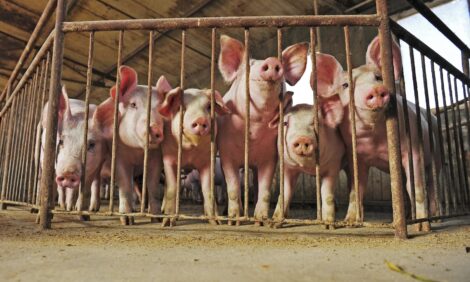



Animal disease poses significant risk to global meat market - report
ASF, HPAI and FMD are all concernsAccording to the recently released OECD/FAO Agricultural Outlook report for 2022-2031, the global meat market continues to face uncertainty with animal disease outbreaks being the most significant risk.
The livestock and meat sector regularly experience serious economic repercussions from disease outbreaks despite advances in public health and veterinary measures. Outbreaks that shock markets can occur quickly and can take years to fully resolve. The socio-economic costs of these disruptions vary by country and situation depending on the importance of the loss of export markets, imports from an affected country, or when consumers reduce purchases because of health concerns.
ASF, highly pathogenic avian influenza (HPAI), and foot and mouth disease (FMD) pose significant ongoing risks for meat markets. The Outlook assumes that recovery from ASF in East and Southeast Asia will be completed by 2031, but said there is risk that this is not the case or that ASF emerges elsewhere. Investments to restructure and modernise production and processing facilities in the pig meat sector, and the successful development of a vaccine would have significant implications for future production and trade.
Bovine Spongiform Encephalopathy (BSE), which had previously impacted livestock markets for decades re-emerged at the end of 2021 in Brazil, temporarily halting exports to China, its main export market. It is assumed that this BSE outbreak will be contained and not affect Brazil’s markets beyond 2022. If it is not contained the impact on Brazil’s meat sector and on world markets would be significant.
Assumptions regarding productivity improvements and climate change policies will affect the meat sector’s contribution to climate change. Since meat is a significant user of resources ‒ of land, feed and water ‒ lower demand along with productivity improvements would imply lower need for these inputs. Specifically, this means lower animal inventories and fewer feed inputs (meat production in 2019-21 used around 38% of the calories produced by the crops covered in this Outlook). Lower production would also imply lower GHG emissions from meat production compared to past decades. The role of the meat sector is critical in discussions on climate change, and future policies addressing environmental change may have important consequences for production and trade, said the report.
Other risks include changing consumer preferences. The Outlook assumes that preferences will be slow to change. Consequently, dietary preferences for lower - particularly red and processed - meat consumption are assumed to be adopted by a small but growing part of the population concentrated mainly in high income countries, and therefore will not significantly affect global meat consumption over the next decade. But preferences may change more than assumed, and more quickly, partly depending on relative prices. The development of novel alternative proteins as substitutes for traditional animal-based foods (meat and milk) may be attractive to meet the nutritional needs and food demands of an increasing population, which some consumers may consider to be more healthy and sustainable.
Advocates for novel alternative proteins foresee benefits that include better nutrition and health, and a reduction in greenhouse-gas emissions. However, scientific evidence on such benefits is not conclusive.
A key element on the prospects of alternative proteins will be their price relative to conventional protein sources from livestock.
Finally, consumers are expressing concerns about meat production systems, in particular animal welfare including traceability and the growing preference for antimicrobial-free meat due to the global risks associated with antimicrobial resistance. Antimicrobial-free and, more broadly organic, meat production systems are being adopted by an increasing number of producers and will affect global meat markets to the extent to which consumers are willing to pay a premium for such meat.








